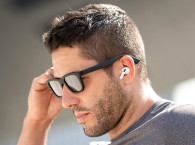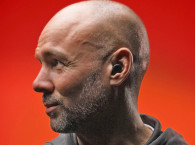 Predicting what trends we’ll see in hearables in 2023 just prior to attending CES seems like a fool’s errand. Even so, it is becoming clear what issues must be addressed in the year ahead to unlock their full potential.
Predicting what trends we’ll see in hearables in 2023 just prior to attending CES seems like a fool’s errand. Even so, it is becoming clear what issues must be addressed in the year ahead to unlock their full potential.Much has been written about the future potential of hearables (including by me) in markets beyond audio consumption such as health monitoring and well-being, audio augmented reality, mobile voice assistants, and especially hearing augmentation and hearing loss mitigation with the release of the over-the-counter (OTC) hearing aid rule in the United States. All of these are predicated on devices that can be comfortably worn for long stretches of the day in a form factor that people are willing to wear in social settings. Without that foundation, these interesting and useful applications will not achieve mass-adoption.
One of the biggest issues is comfort. At base level, this means devices that do not cause pain or irritation. In the 2022 Qualcomm State of Sound Report, comfort for TWS hearables moved to the number two purchase driver, up from number four the previous year. Though consumer experience regarding comfort was not directly measured in the 2022 report, it was in 2021 and the results were not good. Discomfort was the number two issue reported by consumers, second only to insufficient battery life.
Even though people reported generally short continuous use times (the highest being 2.2 hours on average for watching video), 29% indicated their devices were uncomfortable in the ear. One can only guess at the figure were those same devices worn for the longer times envisioned for future use cases. Addressing this must be job one in 2023 if advanced applications are to be successful.


Comfort was the number two complaint for users of TWS hearables in the 2021 Qualcomm report, despite short usage times.
This is just one aspect of comfort. Another, which has received less attention thus far, is occlusion. Its perceived unimportance may be because up until the present time, TWS hearables have been used mainly for passive audio consumption. One can even get used to the sound of one’s own voice during a phone call or Internet meeting but beyond that, it becomes a real issue. In a social setting, occlusion can have two negative effects. The first is that hearing one’s own voice louder than normal tends to make one speak more softly; exactly what is not needed in a noisy environment such as a lively restaurant. The other is that body sounds such as chewing impede hearing. This can make it difficult to listen to a conversation while actively eating, defeating the purpose of any device meant to address situational hearing loss.
Traditionally, occlusion has been addressed by not sealing the ear canal. Audio glasses, bone conduction headsets, loose-fitting earbuds, and even hearables within earrings are all available. Not only do these solve the occlusion issue but they also provide long-wearing comfort combined with natural environmental awareness. They can be ideal within their target scenarios such as sport or conversation in more benign environments. However, they do not provide the noise reduction needed for comfort in loud environments, or for maximizing hearing enhancement in noise.

Advances in ANC promise to address this seemingly mutually exclusive need for less occlusion and isolation from noise. ANC can serve to address occlusion in two ways: Either by being powerful enough to cancel the increased noise entering the ear canal through a loose-fitting earbud, or by cancelling the occlusion sounds directly in a more sealed device. But this opens up another problem. The coming use cases such as hearing enhancement and voice assistant / audio AR on the go require the ability to hear environment sounds. Since ANC reduces environmental sounds, they must be artificially reintroduced in a natural way, and with appropriate levels, through external microphones.
One way to do this is through intelligent discrimination of outside sounds, allowing important sounds through while blocking noise. Increasingly, low power processors, some with on-board neural networks, are making this possible by providing sufficient resources for machine learning-based noise reduction algorithms. As reported by audioXpress one such solution was introduced from Swiss-based startup AVAtronics, who offers a “unique wideband ANC technique, which benefits from deep Neural Network techniques to adapt the ANC system to the environmental noise.” Other solutions aiming specifically at hearing enhancement offer ML speech from noise separation.

A related requirement is the need to provide proper directionality to the ambient sound. This can be a difficult problem, and more than a few brands have settled for ambient awareness without being able to discriminate precisely from what direction a sound is coming. This may be acceptable in certain use cases but for any device intended for long wear in public, natural ambient sound, including directional cues, is a must. Again, hearing aids have been far ahead in support of their value proposition of improving communication. Some hearable brands have also attended to this need; AirPods Pro is a notable example. Others will need to address this issue to be successful in future use cases.

This article was originally published in The Audio Voice newsletter, (#404), January 5 2022.







